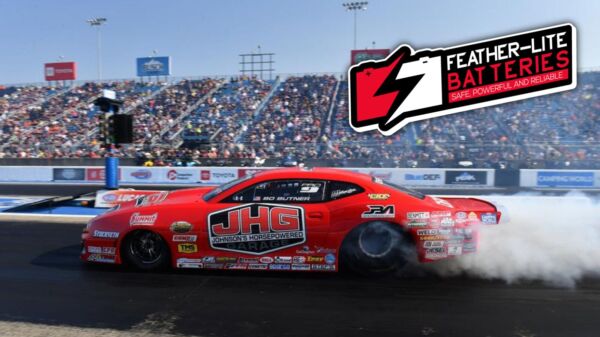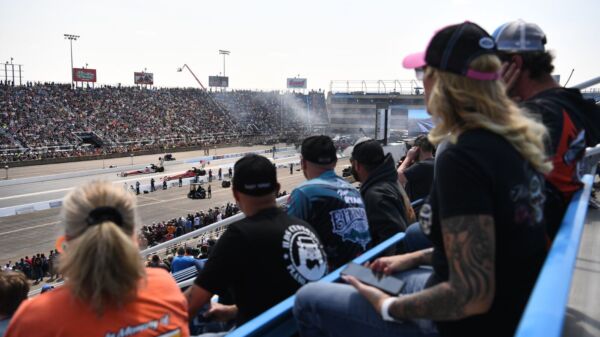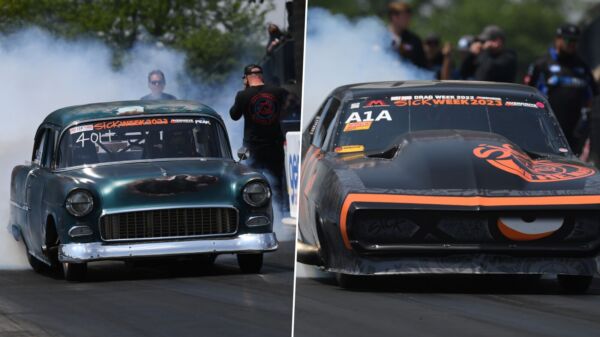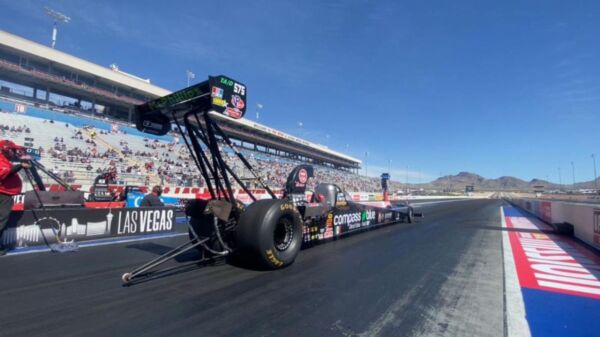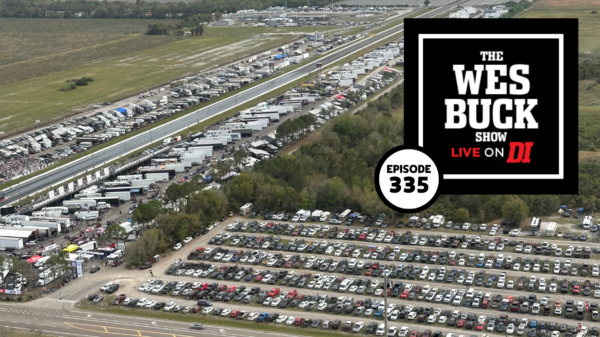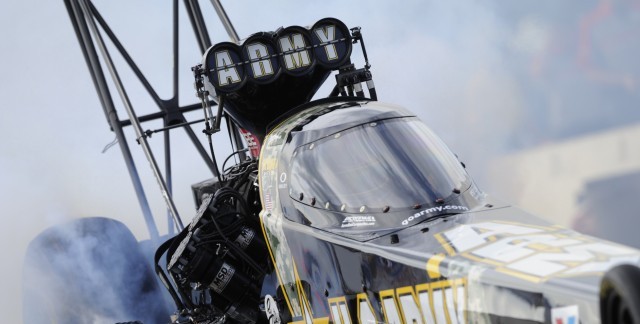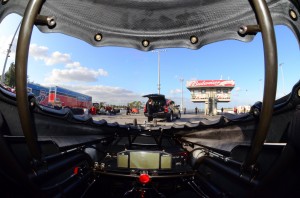A little after 5:30 p.m. on Friday, Aug. 17, 2012, at Brainerd International Raceway, Tony Schumacher eased off the clutch of his U.S. Army Top Fuel Dragster, held the car in the beams with the handbrake, then stabbed the throttle. Just under four-seconds later—3.847 seconds, to be exact—Schumacher had made himself a little more drag racing history with his team’s new controversial cockpit canopy in place for the first time in an official NHRA pass.
Considering his seven world titles, this tidbit of drag racing trivia is marginally meaningful in the grand scheme of things, but the first pass down the 1,000-foot strip for the canopy, clearly, seemed like a pretty big deal to Tony.

Posed up with his new enclosed cockpit deal, Tony Schumacher can hardly wipe the “proud parent” smile off his face.
“It’s phenomenal,” he said, moments after debuting the new technology on Brainerd’s 1,000-foot strip. “You’re safe. You’re in the thing. They close it and you feel…I don’t know…a sense of safety—which is the whole point. For 16 years, I’ve driven this open cockpit where you can see things. Parts and pieces could fly in. And [now] I’m in the capsule. We’ve been looking forward to doing this for a long time.”
Speaking of a long time, the allowance of the current cockpit canopy, which was produced by Aerodine Composites Group after originally being designed by James Brendel of Hondo Boats at the urging of Don Schumacher Racing crew chief Mike Green, came some seven months after it first surfaced at a pre-season nitro test session at Palm Beach International Raceway in February. The primary cause of the delay was a clear and present aerodynamic advantage, which this summer was proven to exist by Purdue University Center for Systems Integrity (PCSI). To nullify the aero advantage, NHRA, DSR and PCSI designed a 0.75-inch wicker bill onto the top of the canopy. Though approved for use, the cockpit canopy is not yet mandated for the Top Fuel class.
Obviously, it would be insane to mandate the new canopy at this point in the season. Matter of fact, it was questionable to even allow it into competition at this juncture (16 races into a 23-race season). Regardless, I’m casting my vote right here for the NHRA to mandate the new canopy for all Top Fuelers in 2013.
I’m privy to the concerns of most teams—which are centered primarily around things like the 25 to 30 pounds the canopy adds to the cars and the potential or at least the perceived possibility of a fire hazard— but I don’t think anything nullifies the benefits of enclosing the cockpit of these Top Fuelers with a bad-ass, high-tech, space-age looking canopy. Beyond my opinion that the canopy is indeed safer and, again, in my opinion, faster, I think the cool factor alone is reason enough to make sure every one of these cars has a canopy for next season.
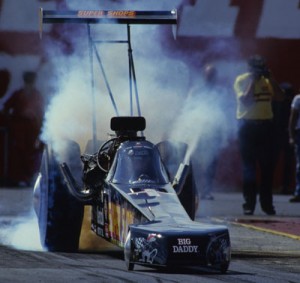
“Big Daddy” Don Garlits had a good idea in 1986 and then, too, did the NHRA have a hard time swallowing the canopy.
Let’s face it: the world’s quickest and fastest race cars (Top Fuel dragsters) don’t look a whole lot different than they did in 1970. As far as I’m concerned, the absolute pinnacle of drag racing could use a facelift, and these canopies would be a huge step in the right direction. I’ve long believed that one of drag racing’s biggest problems, especially when it comes to how poorly it translates on television, is simply because it looks too easy. Without the deafening sound, earth-shaking tremors caused by the faster-than-the-speed-of-sound acceleration you experience at a drag race firsthand, the sport looks pretty docile. These new canopies, in my opinion, add some space-age, fighter-pilot, marvel-of-modern-technology mystique to a car that, otherwise, seems fairly rudimentary to the uninformed.
Footage of drivers strapping into these cars with fighter jet-esque cockpits (I’d get some big oxygen hoses running to their helmets, too, and maybe some electrode looking things to their foreheads with wires running to some sort of driver monitoring device), especially in-car footage, can’t help but intrigue someone who is channel surfing. I mean, if these cars really are the quickest, fastest and most powerful competition vehicles on the planet, wouldn’t it only make sense that they have some sort of spaceship looking cockpit? Sometimes we’re our own worst enemy. The added safety is great, but the appeal, at least to me, is in the high-tech look.
This story was originally published on September 5, 2012. 


